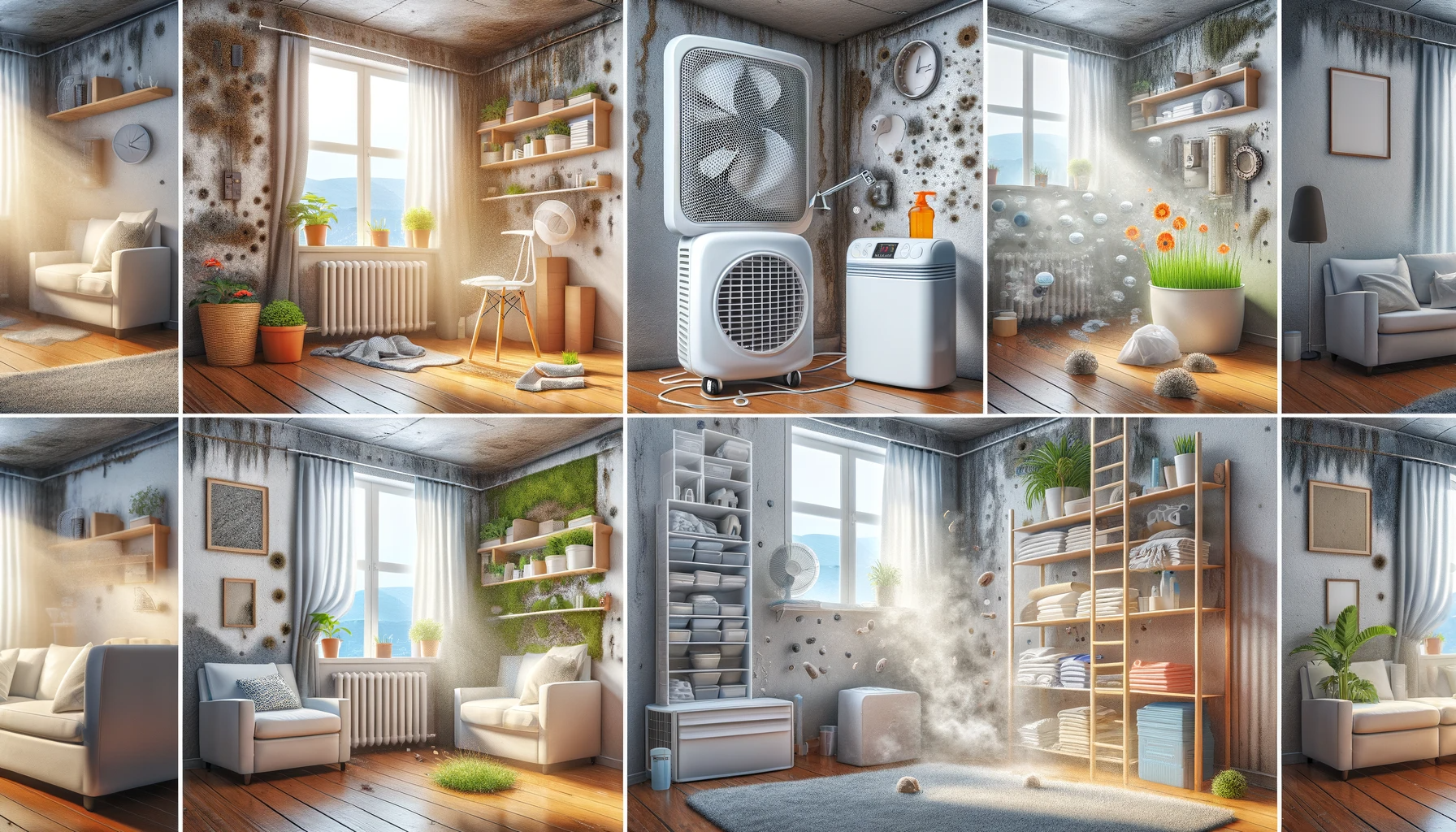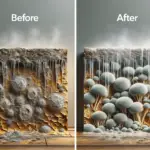Do you have a mold problem in your home? Have you ever considered the potential health risks of mold spores in your environment? This article will teach you how to prevent and address any potential mold problem in your home.
How Does Mold Growth happen?
Mold is a type of fungus with multiple colors and forms. It grows when spores in the air come into contact with damp or moist surfaces and have access to moisture and food (organic material) sources like dust or organic matter. Mold growth is encouraged by warm temperatures, humidity, low light, and poor ventilation – factors commonly found in basements, bathrooms, and other enclosed environments.
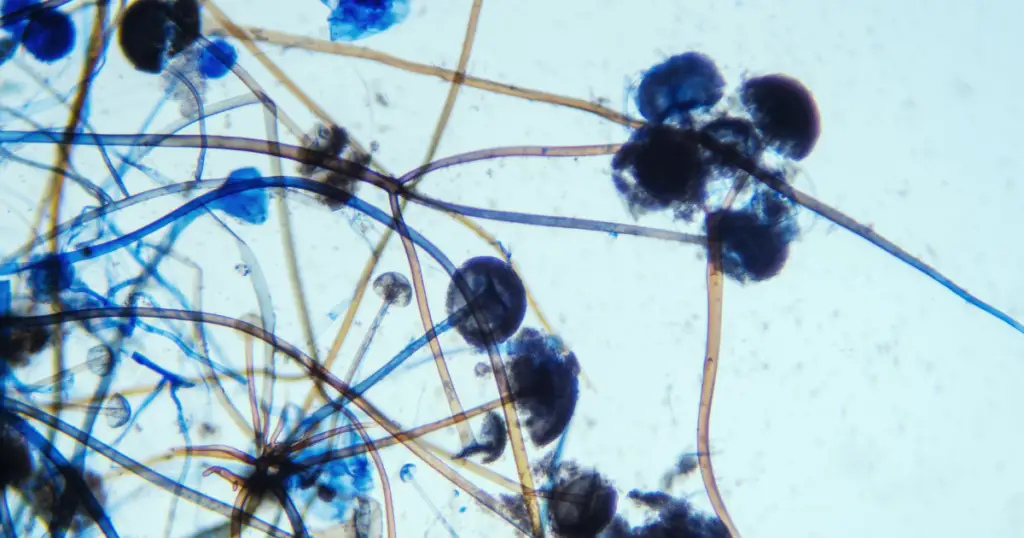
How Does Mold Get In My House?
Mold spores can enter your house through open windows, doorways, and vents. They can also come in on clothes, pets, and other objects that have been exposed to mold spores. Once mold spores land on a damp surface, they can start to form colonies and reproduce.
Molds reproduce through a process called spore formation. Spores are the reproductive cells of molds, which can be released into the air and spread on floating particles or clothing. These spores will ‘germinate’, or grow into new cells when they settle into a suitable environment for growth. High levels of humidity combined with a moisture problem, such as a leak or flood, create the perfect condition for mold to grow in your home.
What causes molds in the house?
Mold is an unsightly and potentially harmful issue that is present in many homes. It can be caused by many factors, but the most common is excess moisture. A leaky pipe, a damp basement, or high humidity levels can all lead to an environment that supports mold growth.
When looking to prevent mold growth inside your home, it’s important to understand what causes it in the first place. Common causes include, but are not limited to:

- Poor insulation;
- Water damage from floods or leaks,
- Plumbing leaks, Leaking pipes or roof leaks;
- High levels of humidity due to lack of ventilation, air conditioning, or for drying wet clothes indoors;
- Poor drainage or soil saturation around the home;
- Foundation leaks;
- Excess water from planting beds, gardens, swimming pools or spas;
- Poorly maintained gutters and downspouts which allow water to pool on your roof or near your foundation;
- Basements with high levels of groundwater;
- Condensation on windows, walls and ceilings due to temperature differences.
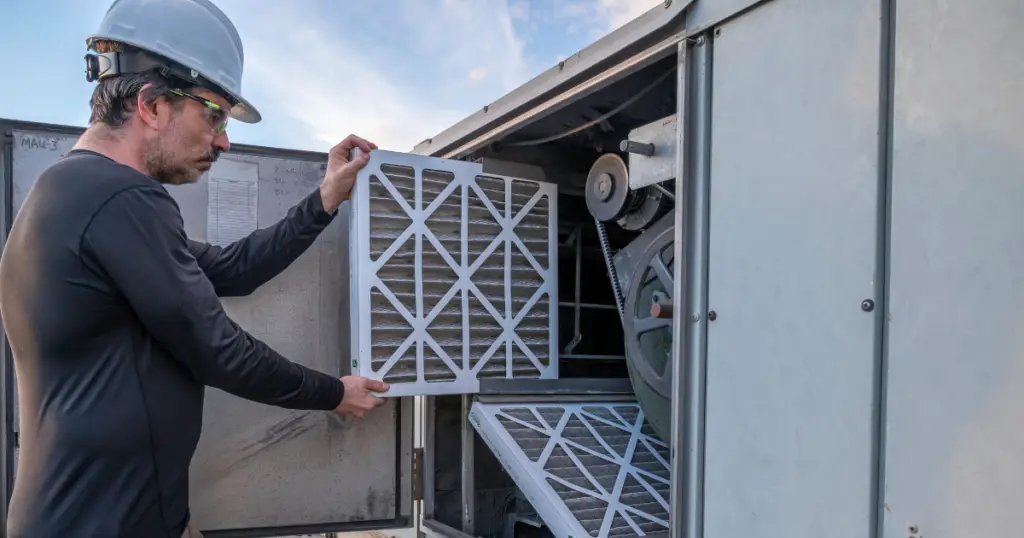
Where Can Mold Grow in My House?
Knowing where to look is essential for effectively preventing mold. Pay special attention to the following areas in your home, which are especially prone to mold growth:
Bathroom
Because of the high moisture levels, bathrooms are a common breeding ground for mold. Look in areas like showers and tubs, as well as around windows and doors.
Basement
Basements can be especially vulnerable to mold because of their dampness and lack of proper ventilation.
Kitchen
Kitchens often suffer from moisture problems and high levels of humidity. Pay special attention to areas around sinks, dishwashers and stoves.
Walls
Mold can also form behind walls. Look for spots of discoloration, musty odors or soft spots in your walls.
Attic
The attic is another area to watch due to its dampness and lack of air circulation. Watch out for signs of water damage and standing water as these
Laundry room
Laundry rooms are prone to moisture and warm temperatures, making them a breeding ground for mold growth.
Crawl space
Crawl spaces can be damp and dark, which is perfect for mold to take hold if there is any source of moisture present.
Air conditioner
For air conditioners, don’t set the thermostat too high or it won’t dehumidify your air effectively; if you set it too low, you will create cold surfaces where water vapor can condense and cause condensation, leading to mold growth.
Ceiling tiles
Ceiling tiles often have water damage from leaks or condensation, creating good conditions for mold growth.
HVAC system
Humidifiers, vents, and filters in HVAC systems can create ideal environments for mold when there’s excess moisture.
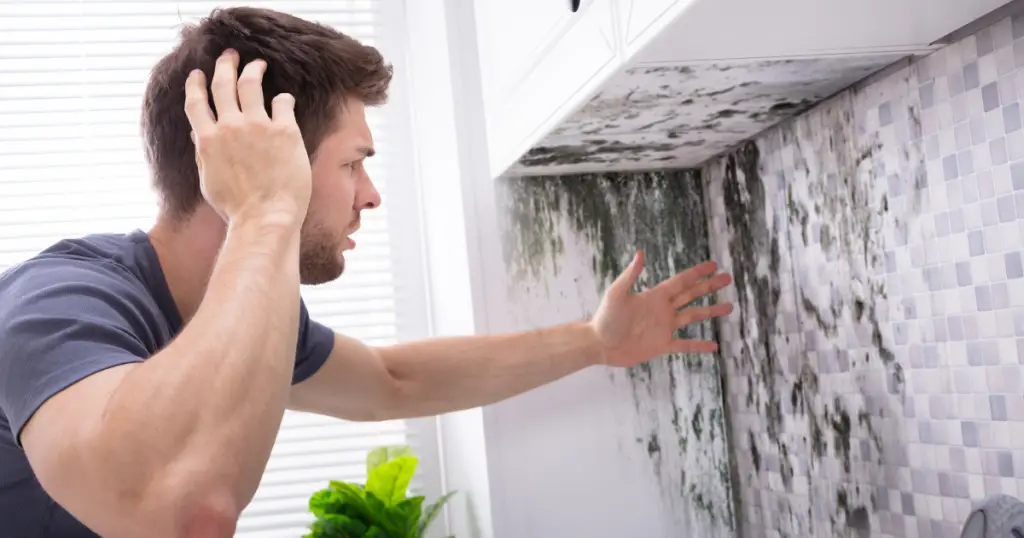
How can I Prevent Mold?
To ensure your home stays free of mold, here’s a guide to help you to prevent mold. Keeping an eye on hazards like this is key to creating and maintaining a safe environment.
- Maintain temperature and indoor humidity levels: Keep the inside of your home at an optimal temperature and humidity level. This can be done with air conditioning and dehumidifiers as well as fans, and other methods.
- Dispose of damaged materials and clutter: Damaged materials like drywall or carpeting should be thrown out as it creates an ideal moment for mold to take hold. Clutter should also be removed or cleaned regularly as dust and dirt can accumulate in forgotten areas of the house.
- Introduce fresh air into the house: Open windows and doors when cooking, bathing, or mopping to allow fresh air to circulate through the home.
- Don’t dry clothes inside: The steam created when drying clothes indoors can create a moist environment ideal for mold. Leave wet clothes outside on good weather days, or use a dryer vent leading outside instead.
- Check drip pans regularly: Check drip pans located in appliances such as refrigerators and dehumidifiers for standing water that could lead to mold formation. Clean them regularly according to manufacturers’ instructions.
- Install exhaust fans and vents: Install exhaust fans in kitchens, bathrooms, attic spaces, etc., to help reduce moisture buildup from activities such as cooking and showering in these rooms. Vents are also useful for keeping air circulating throughout the house.
- Maintain a clean home: Regularly vacuum carpets, sweep floors, dust furniture, etc., all of which serve to reduce the potential mold hazards present within your home.
- Look for leaks or standing water: Inspect around sinks, showers, toilets etc., for any signs of leakage or accumulation of water which could lead to mold formation over time if not addressed promptly.
- Clean/repair roof gutters: Make sure roof gutters are properly maintained so they don’t pool water near your property’s foundation which could eventually cause seepage into walls leading to mold growth within the interior house structure.
- Check and improve insulation if needed: Insulation installed between exterior walls often has gaps in it that create warmth pockets encouraging condensation which is an ideal environment for molds to thrive in; inspect insulation every few years and replace it if needed.
- Cover crawl spaces: Cover crawl space floors with a plastic tarp or sheeting designed specifically for this purpose; this will limit moisture getting into these areas where mold thrives while still allowing ventilation through small gaps along its edges thus reducing chances of condensation forming underneath it.
- Have mold-resistant products on hand: Use mold-resistant paint, sealants, wallpapers, fabrics, caulks, carpets, etc., that can help prevent spores from taking hold even when dampness is present due to high humidity levels within the room itself.
- Use Dehumidifiers & Air Purifiers: These devices remove moisture from your indoor air helping keep down humidity levels and preventing molds from forming.
- Professional help: If you suspect that mold is already present in your home, it’s best to contact a professional for help. They can do an inspection and recommend the best treatment plan for clearing out existing mold infestations.
To guarantee your home is safe from the hazardous effects of mold, following these steps is essential. Keep in mind that it’s better to take preventative measures than attempt a solution after an issue has occurred.
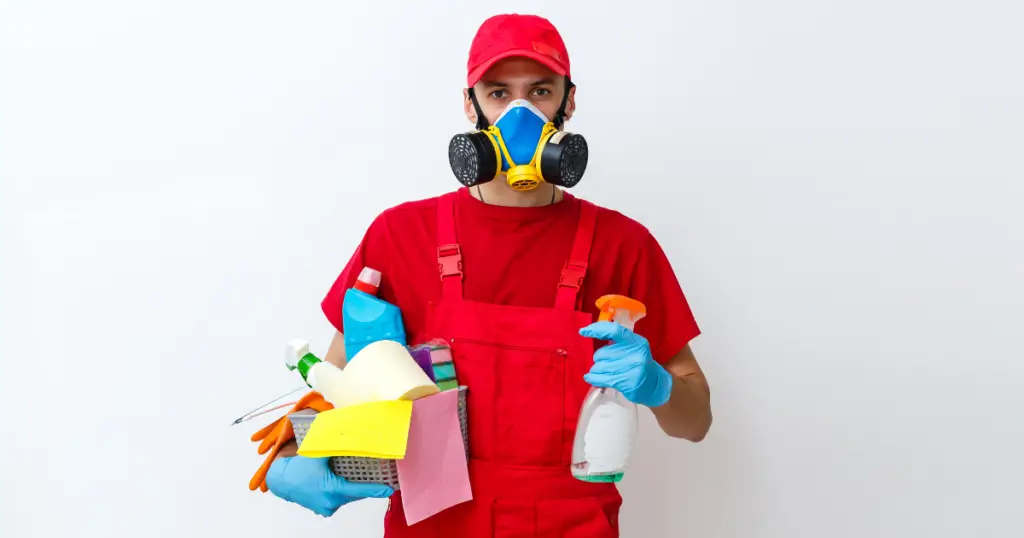
What products prevent mold?
Mold inside your home can be prevented by using a few common household products:
- Chlorine bleach: Chlorine bleach is an effective mold killer and can be used on various surfaces including bathroom tiles and grout. Always follow the manufacturer’s instructions when using chlorine bleach.
- Mild detergent: A gentle cleansing agent such as dishwashing liquid is great for cleaning surfaces to prevent mold buildup. Use a soft brush or cloth to clean any affected areas.
- Clean mold with baking soda: Baking soda is a natural, non-toxic way to clean tough molds and mildews off hard surfaces. Make a paste of it with water and scrub affected areas with the paste.
- Mold inhibitors and mold-killing products: There are many commercial products available that help stop mold from forming, such as mold inhibitor sprays and wipes for bathrooms, basements, walls etc. Follow the manufacturer’s instructions when using these products.
- Tea tree oil: Tea tree oil is a natural antifungal agent that can be used to treat existing mildew and fungus while also preventing future recurrences when sprayed on affected areas regularly.
- Hydrogen peroxide: Hydrogen peroxide can be used to kill spores of molds on hard surfaces; simply spray directly onto the affected area and leave it for around 10 minutes before rinsing off with water.
- Vinegar: Vinegar has anti-fungal properties which can help get rid of existing mold while also helping to prevent new colonies from forming; simply mix one part vinegar with one part water in a spray bottle, then spritz over the affected area before wiping away with a cloth.
What can I do once Mold is in my house?
If you’re faced with mold in your home, the first step is to identify and fix plumbing leaks that are producing moisture. Proper ventilation of areas such as bathrooms, laundry rooms and basements can also help reduce the risk of mold in these areas. Additionally, it is important to take measures for proper mold prevention in the future.
If you’re facing an issue with mold beyond what you can manage on your own then it’s best to consult a professional who has experience in dealing with this kind of problem. They may also be able to advise you on special products that can be used to effectively kill mold.
What eliminates mold spores in the air?
Air purifiers, dehumidifiers and HEPA filters are the most effective ways to reduce mold spores in the air. Air purifiers help to remove airborne particles, including mold spores. Dehumidifiers help to reduce humidity in the indoor environment which can prevent molds from developing. Lastly, HEPA filters trap microscopic particles like mold spores so they can’t circulate through the air.
Mold spores that have already been released into the air can also be removed by using a vacuum cleaner with a HEPA filter attached. Vacuuming regularly is essential for keeping your home free from allergens and other pollutants, including mold spores.

Can mold exposure cause health problems?
Mold exposure can lead to a variety of health effects. People with allergies or asthma may experience more severe reactions than typical when exposed to mold spores, such as red and itchy eyes, sneezing, coughing, and difficulty breathing. Additionally, prolonged mold exposure in the home can lead to severe respiratory ailments, skin irritation and even neurological issues if not properly addressed.
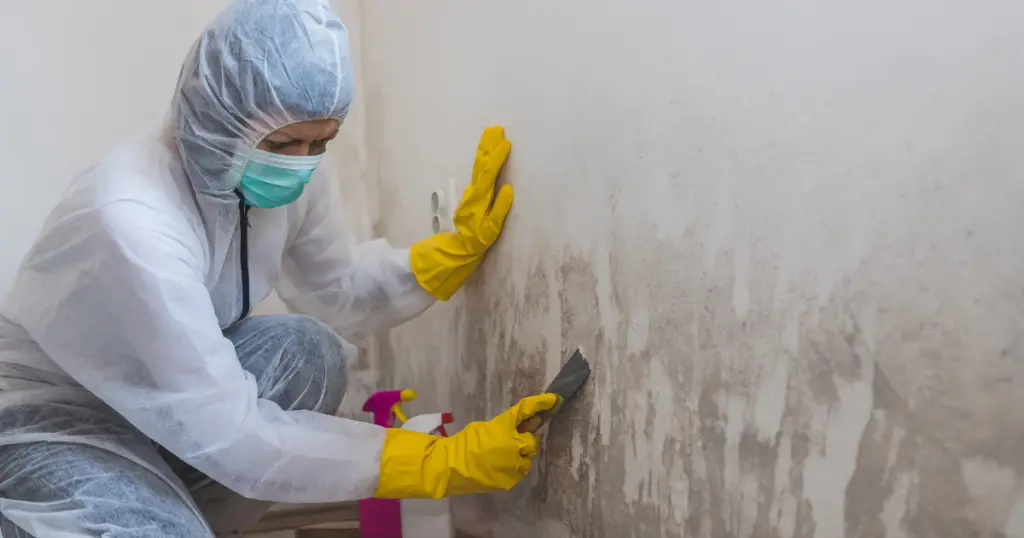
Final Considerations
When it comes to mold prevention, it is important to be proactive and act quickly when signs of mold growth appear. Keep an eye out for any warning signs such as a musty odor or discoloration on walls and ceilings. Homes and commercial buildings should be inspected regularly to detect any potential problems before they begin growing. Taking the time to address these issues early can help prevent costly mold damage down the road. In cases where a large infestation is present, it may be necessary to seek professional help to ensure proper remediation.
[/et_pb_text][/et_pb_column][/et_pb_row][/et_pb_section]

